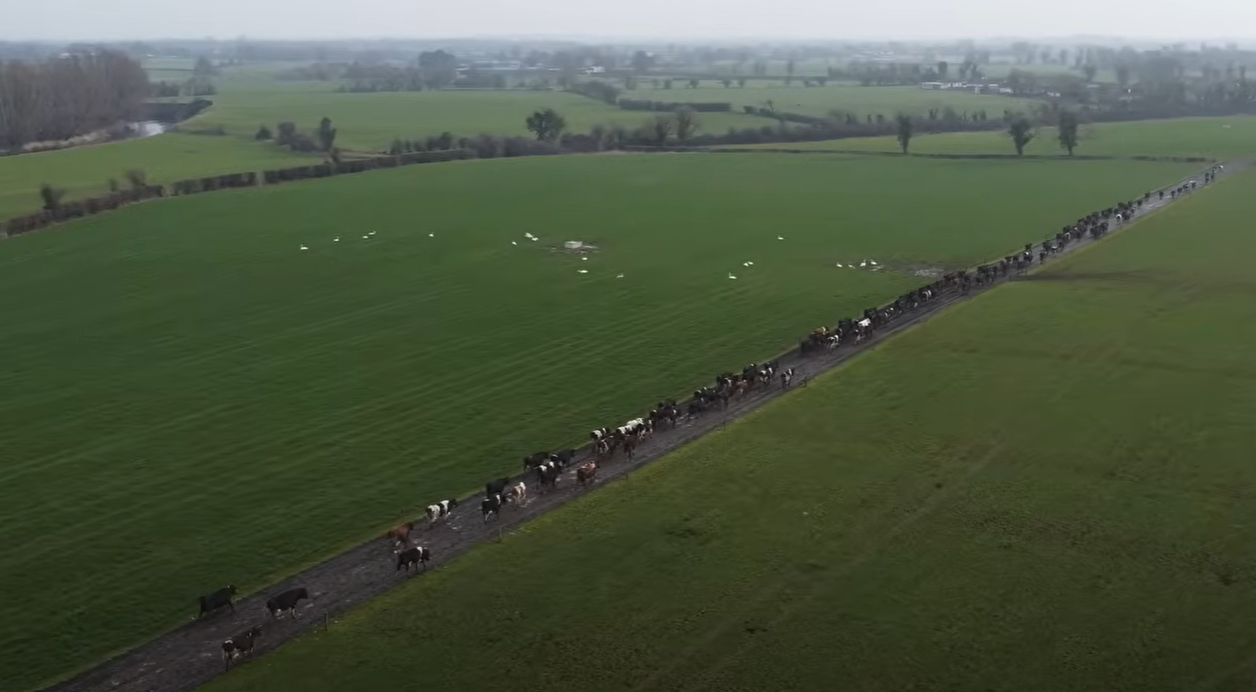Lameness can become a huge issue on dairy farms at this time of the year as cows are still holding milk production, walking long distances, and recovering from the breeding season.
The main job on the farm now is milking the cows, which might give farmers a chance to rectify any lameness issues within the herd through foot bathing and/or hoof trimming.
The Animal Health Ireland (AHI) Hoof HealthCheck technical working group of Ned Dunphy, Ger Cusack, and Eoin Ryan have focused in on the most common causes of lameness and the risk factors increasing the likelihood of them occurring.
A cow’s hoof consists of the wall horn, the sole horn, and the white line – which is the junction where they meet. The white line is a particular point of weakness, and many cases of lameness cases start here.
According to AHI, more than 80% of the conditions that cause lameness occur in the foot of the cow and, of these, over 80% occur in the hind foot, with the most common cause in grazing herds being non-infectious.
Non-infectious lameness
In grazing herds, the risk increases in the main grazing months of the year. Non-infectious foot lesions are white line disease, sole haemorrhages, or bruising and sole ulcers.
White line disease is caused by grit or small stones entering the white line, leading to painful inflammation.
Sole bruising results from trauma to sensitive tissues beneath the sole, often due to hard or rough surfaces, whereas sole ulcers are caused by internal pressures within the hood capsule, usually on the outer claw of the hind foot.
As the day-to -day routine for the cows becomes quite repetitive, it is important to ensure their walking surfaces are in good order as uneven, sharp or potholed roadways, yards and gateways can injure feet.
Now might be the time to analyse your yard design, as poor design can result in inadequate turning space at the parlour exit and insufficient space in the collecting yard. Allow for at least 1.5m2/cow.
Feed space is also crucial, as inadequate space causes pushing and shoving and quite often the smaller, younger heifers will be the ones to feel the blunt of this. Cows need at least 600mm/cow of feed space to avoid this.
At this time of the year, farmers will be trying to get away from the farm and may organise relief milkers or neighbours to cover the odd milking, but no matter who is milking, cows need to be moved and herded in a calm manner.
Quite often, using dogs and quads will cause cows to hurry into the parlour and can cause shearing forces on the hoof.
Investment in technology such as batt latches may save time and improve hoof health as cows walk in on their own pace.
If a number of cows have their heads up in the air, they are being rushed as cows will normally walk with their heads looking at the ground.
If cows are standing on concrete for long periods of time, the risk of sole ulcers increases. In this case, the number of units in the milking parlour may need to be analysed or the number of cubicles per cow – farmers should have 10% more cubicles than cows.
Infectious
The two main infectious hoof conditions in Irish dairy herds that are causing lameness are foul-in-the-foot and digital dermatitis (mortellaro).
Foul-in-the-foot is caused by bacteria entering through broken skin between the claws, which leads to swelling and severe pain.
Mortellaro is a contagious disease of the skin near the hoof and many cows may carry this disease without showing any signs. Both conditions will thrive in wet, slurry-covered environments.
Farmers may need to improve hygiene on the farm if these diseases are causing trouble. It is important to ensure that scrapers are going down frequently and that passageways are always clean.
Farmers should also ensure that they are foot bathing regularly, and if mortellaro is a serious issue, farmers should be foot bathing numerous times a week until the disease is somewhat under control.
It is essential that cow’s hooves are disinfected to help prevent infectious conditions. Make sure that the foot bath is set up properly so that the whole hoof is submerged and each foot enters the bath.
With lameness, it is hugely important to monitor the situation regularly through locomotion or mobility scoring as early detection and prompt treatment are key to preventing worsening cases.
The AHI also advise farmers to build a good relationship with your vet and hoof trimmer as they are essential to effective lameness prevention.

